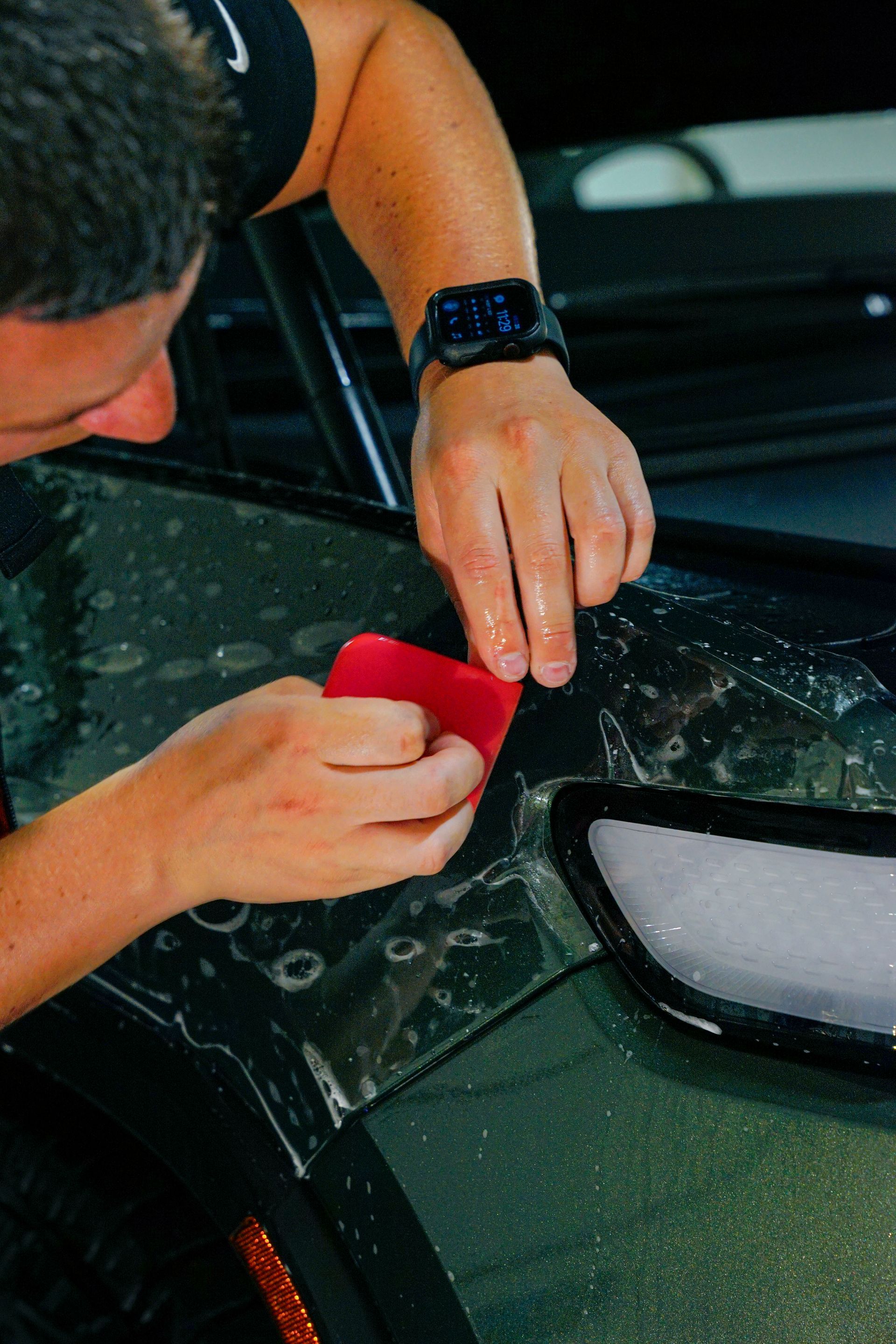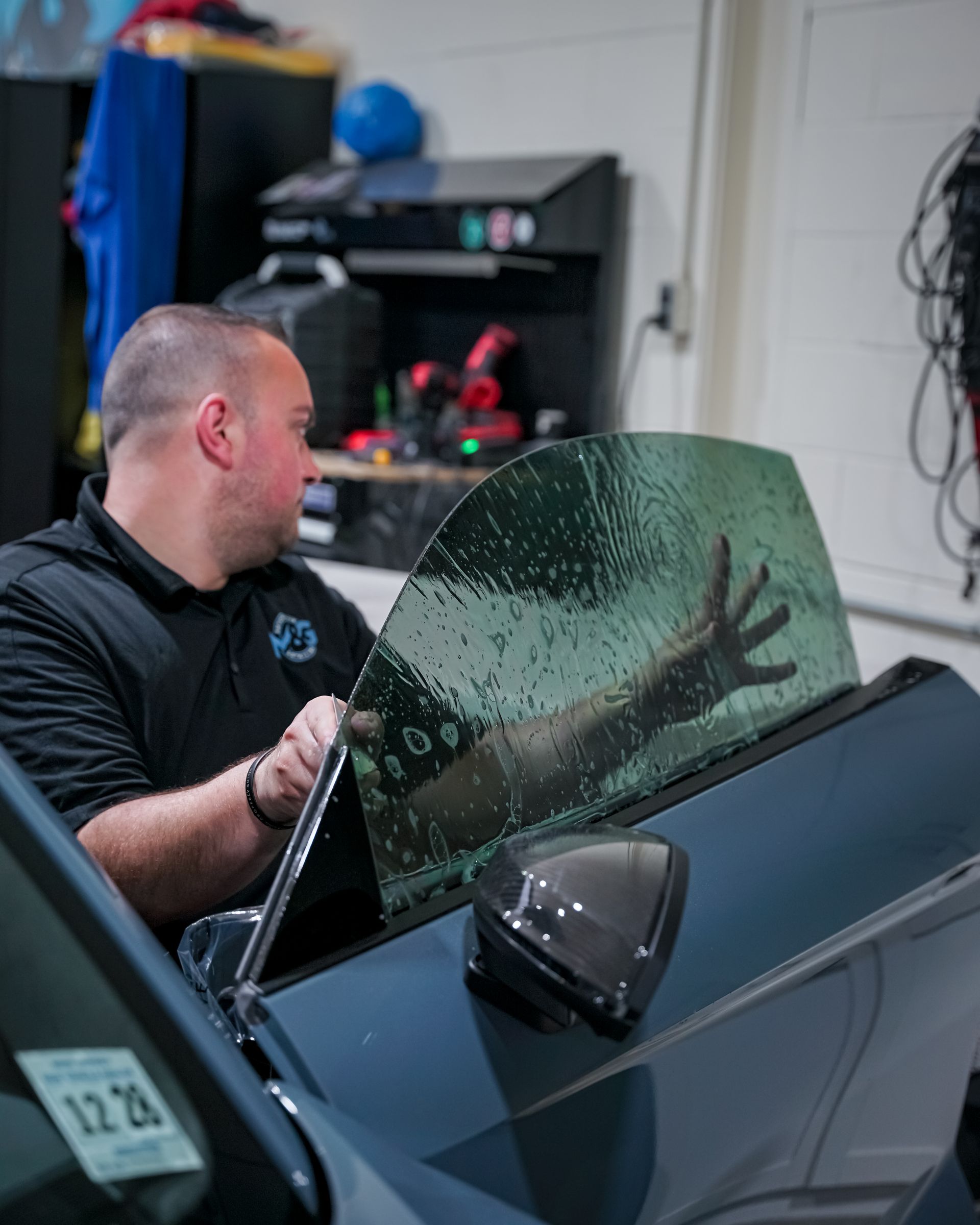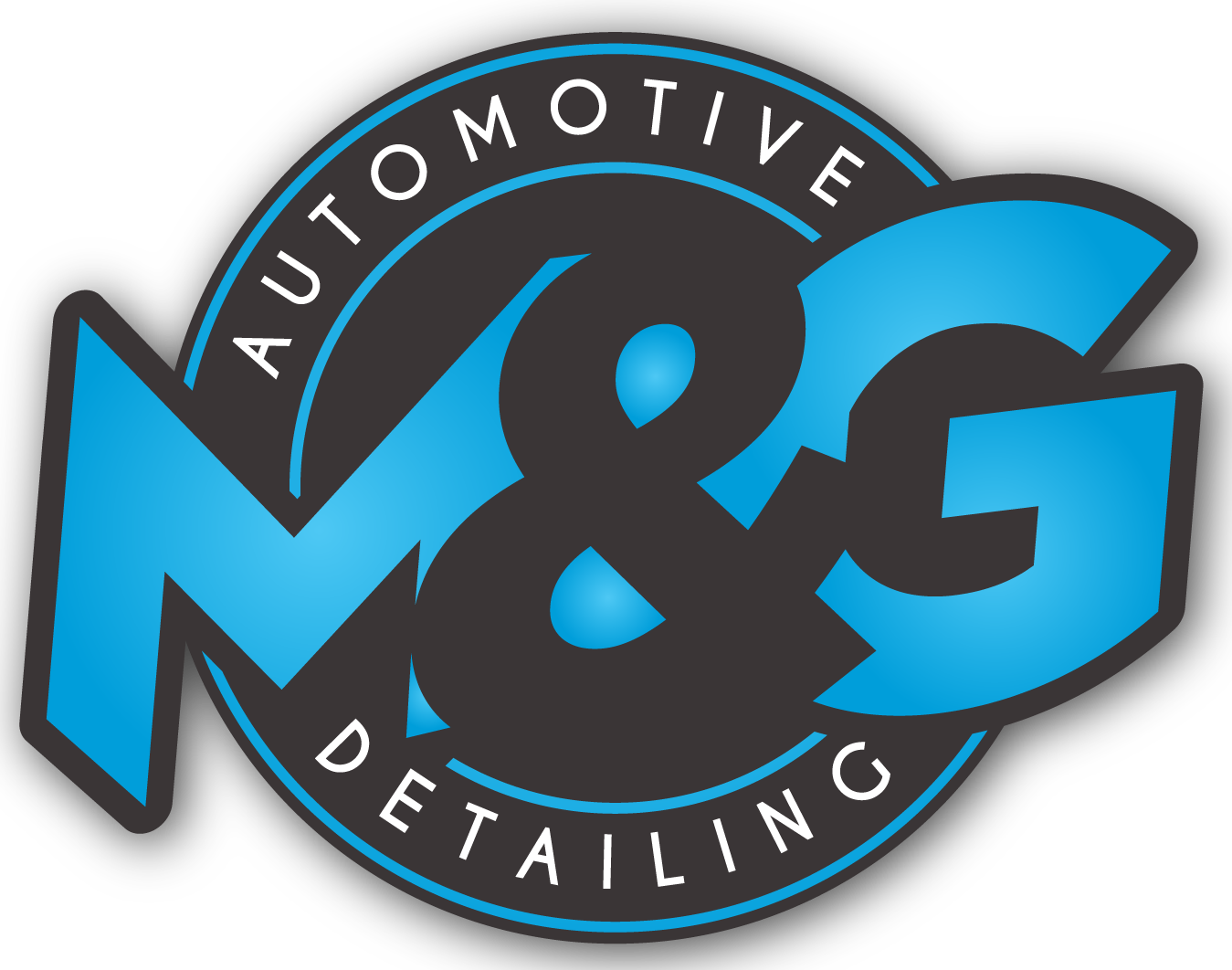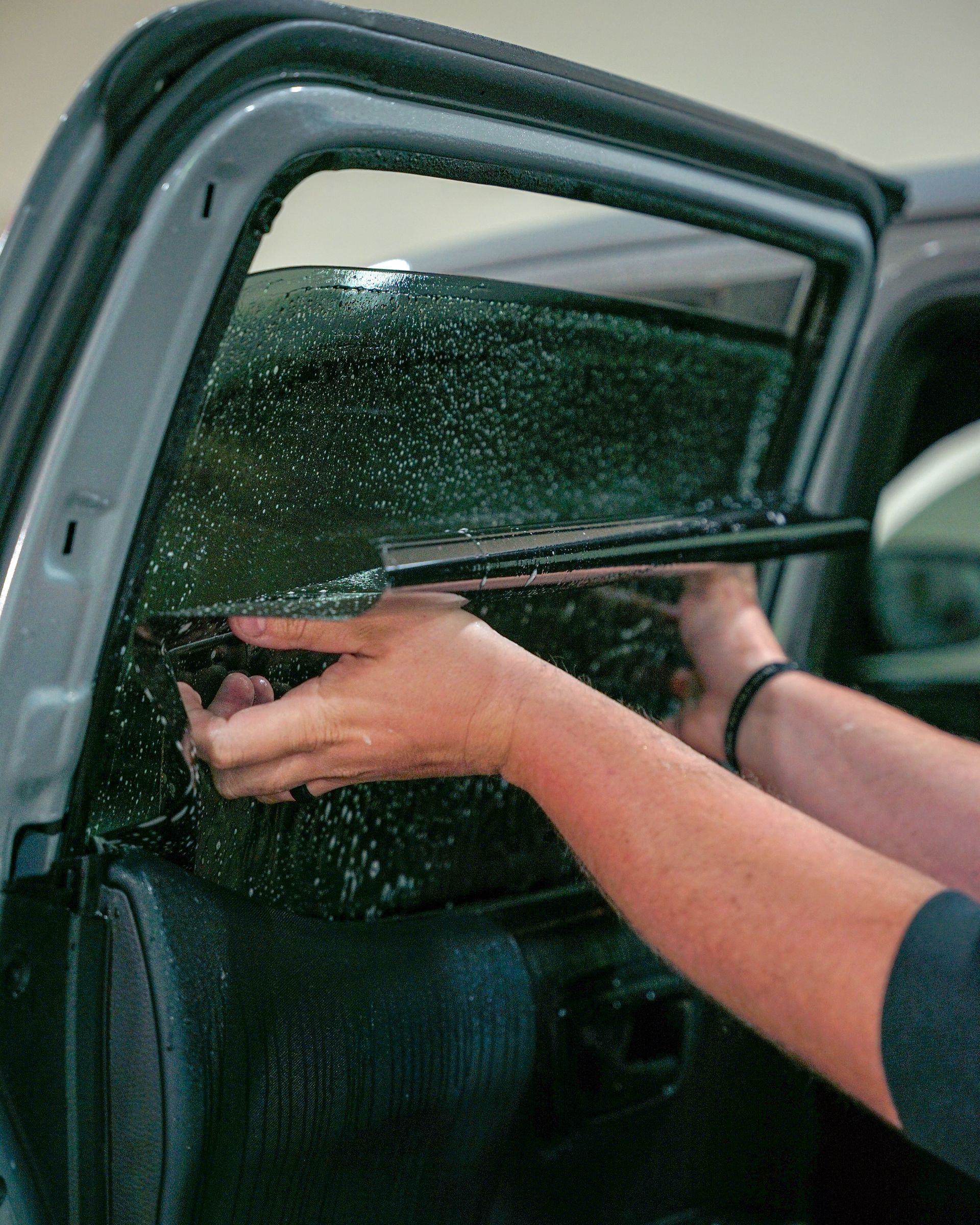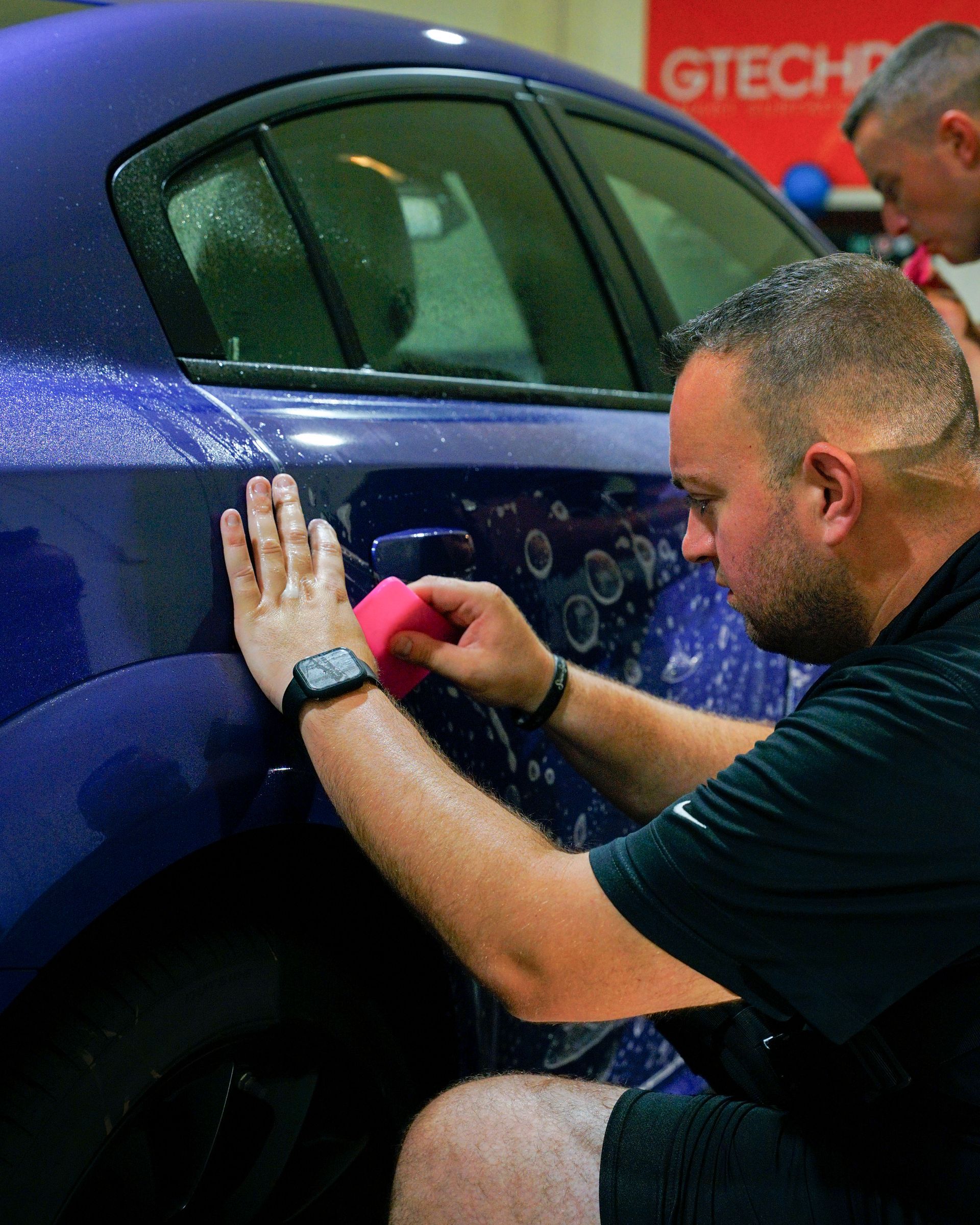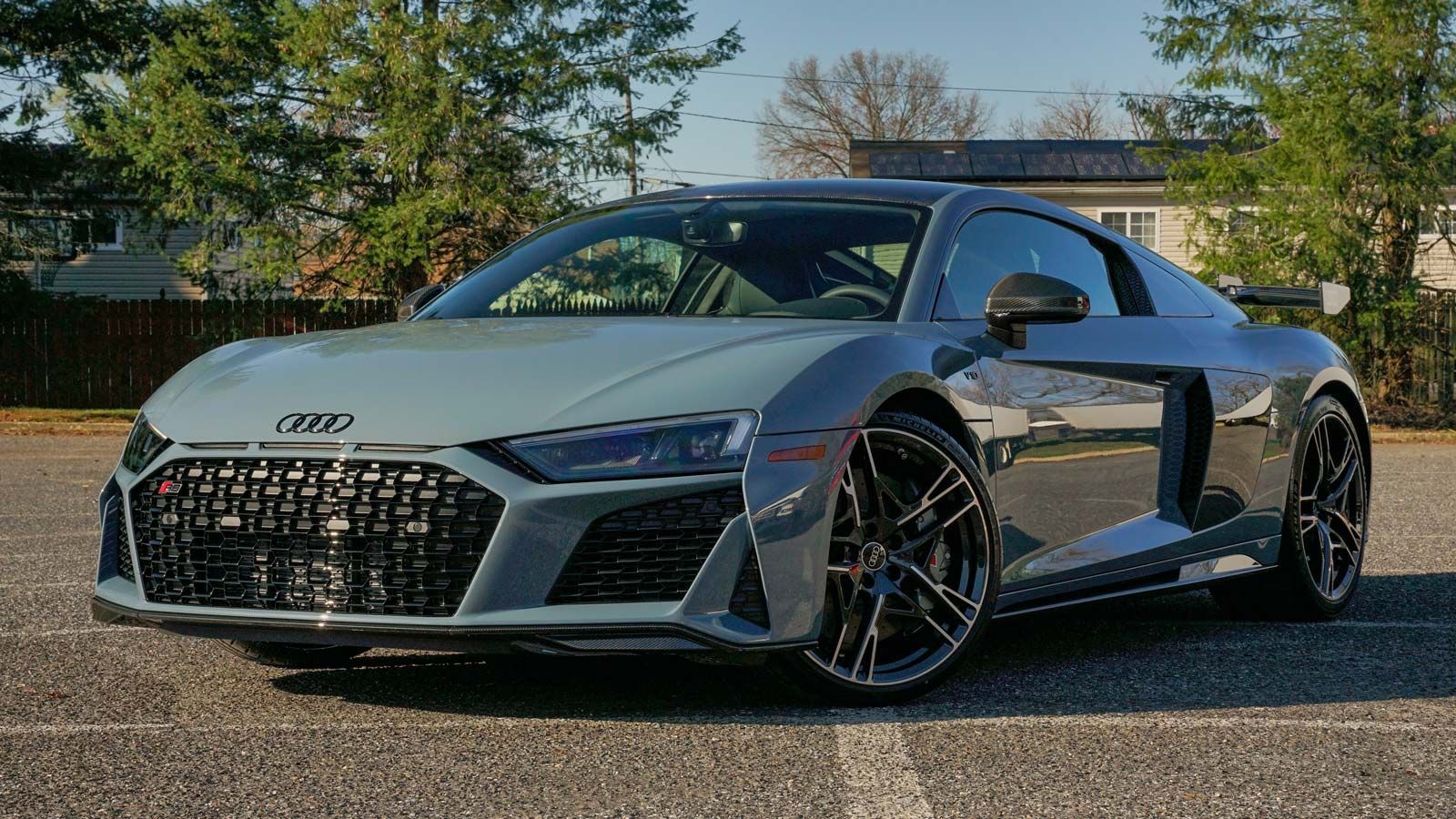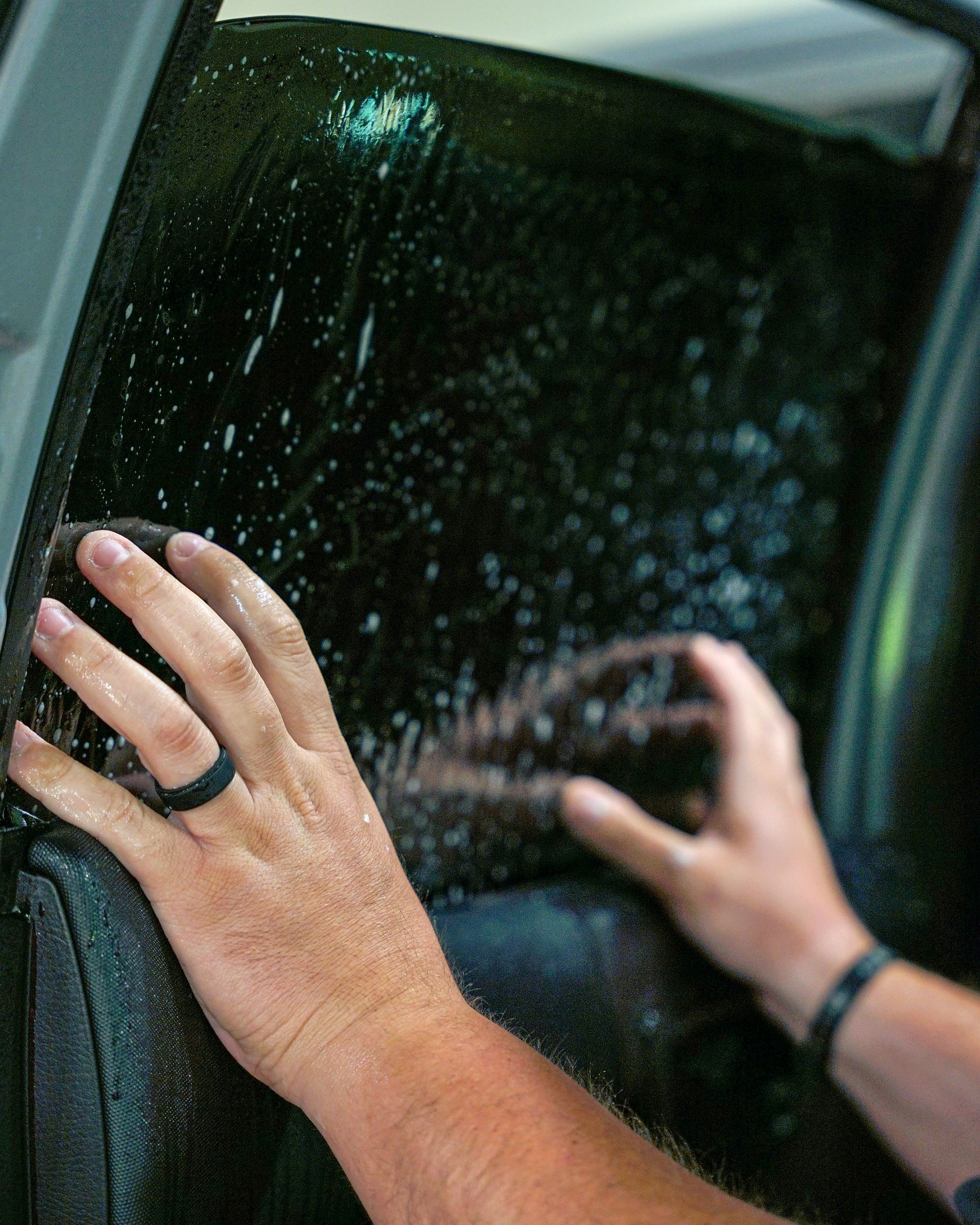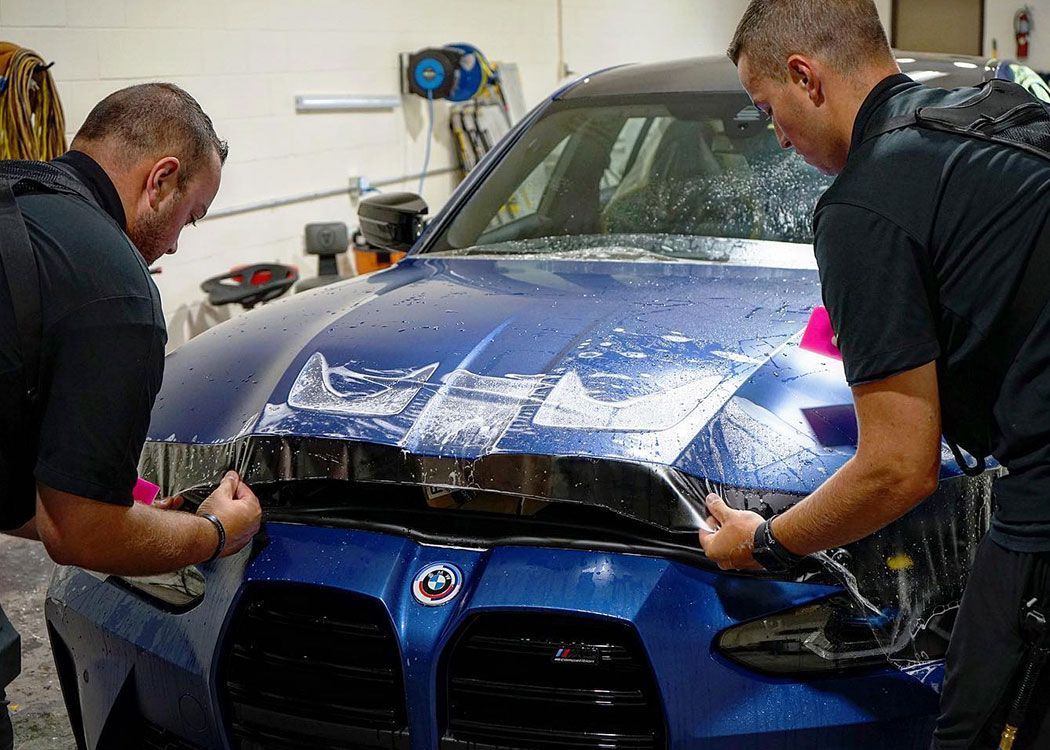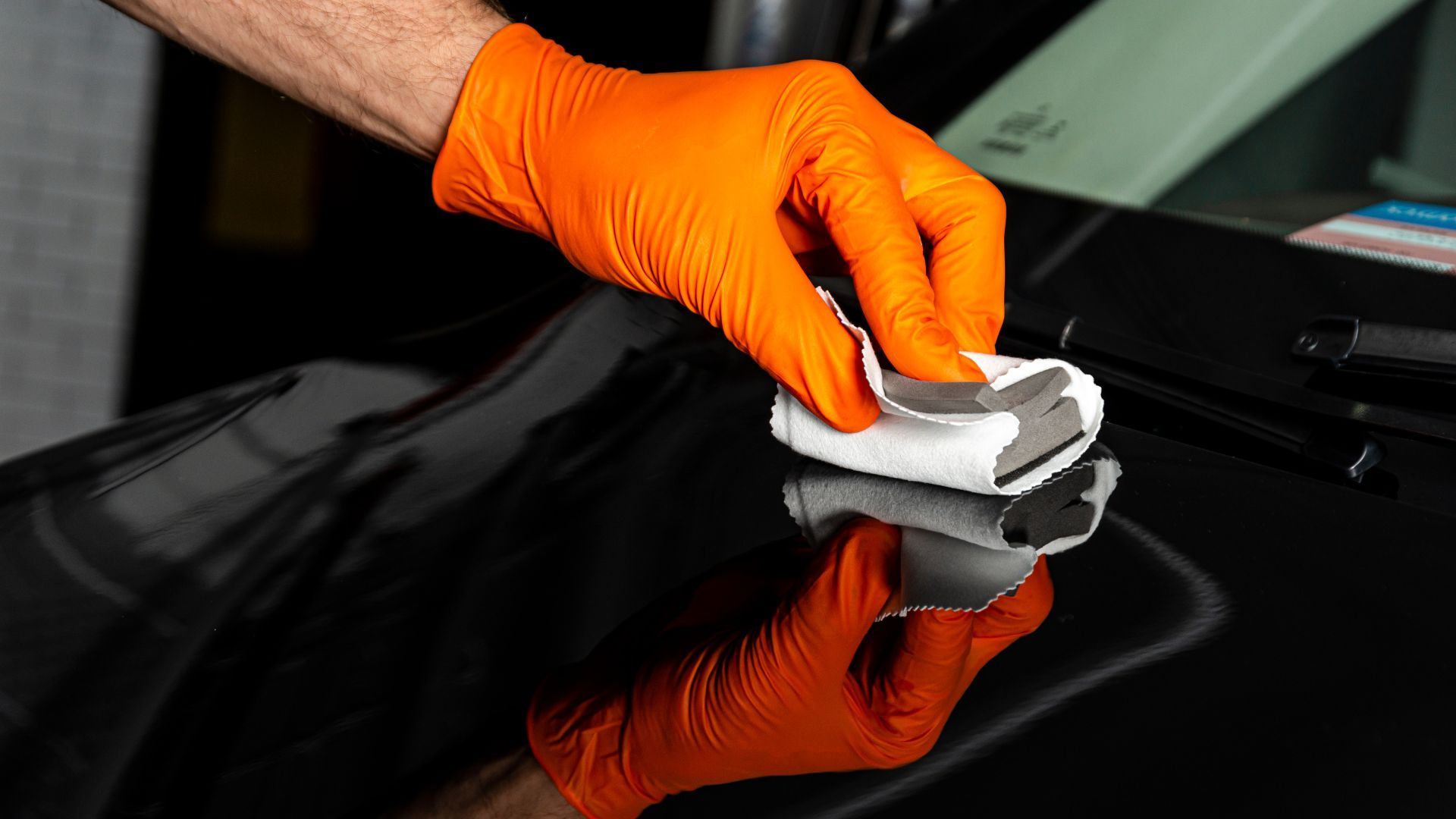Protect Your Car's Paint: Why Paint Protection Film is Essential
Your car is not just a means of transportation; it's a statement of your style and a symbol of your hard-earned success. You take pride in its sleek design and flawless paint job, but the constant battle against scratches, chips, and other damages can be disheartening. That's where paint protection film steps in as the ultimate shield for your vehicle's pristine exterior. In this blog post, we'll delve into the undeniable importance of paint protection film and explore how it can preserve the allure of your car's paint job. Get ready to unlock the secrets of this game-changing solution and embark on a journey towards long-lasting beauty for your beloved car. Say goodbye to worry and hello to a paint job that stands the test of time!
Paint Protection Film (PPF) is crucial for protecting your car's paint job from various elements such as rock chips, debris, and UV radiation. It provides an additional layer of protection against scratches and other types of damage that can occur during driving. The film is engineered to absorb and disperse the energy of impacts, preventing them from reaching the car's paint. With self-healing properties, high-quality PPF can repair minor scratches and swirls while maintaining its transparency over time. Overall, investing in PPF can save you time and money in the long run by preserving your car's pristine appearance and resale value.
What is Paint Protection Film?
As a car owner, you take pride in your vehicle's appearance, and it gets disheartening when you notice scratches and paint chips on the car's surface. This is where paint protection films come in to save the day. Paint protection films are clear, thermoplastic polyurethane sheets that are applied to the painted surfaces of cars as a means of protecting against dust, debris, scratches, stains, and other forms of damage.
PPF is engineered specifically with resistance in mind. The film possesses exceptional shock absorption properties that help minimize physical damage that may occur through environmental elements like rocks, road salt, or debris from construction sites. The film effectively absorbs the brunt of incoming projectiles or flying debris while maintaining its structural integrity.
Paint protection film is made up of multiple layers that have specific roles in ensuring your car maintains its luster without getting damaged by external factors that could lead to costly repairs and paint touch-ups. Typically, it is made up of three major layers: the top clearcoat layer, which possesses excellent self-healing properties and reduces microscratches, and a middle layer of clear film made up of elastomeric polymers. The bottom layer consists of an adhesive compound that guarantees attachment between the PPF and the painted surface under any weather condition. After understanding what paint protection film entails, it is essential to consider its many benefits.
Benefits of Using Paint Protection Film on Cars
You might question the cost and utility of applying a sheet over your car's surface. The thing is, PPF adds protection that goes beyond just avoiding minor damages. Here are some of the top benefits of using paint protection films on cars:
Long-term maintenance: applying PPF reduces your cleaning and repainting time by up to 50%. It saves you dollars in repainting bills. You do not have to worry so much about harsh environmental factors ruining your paint job or finding unnecessary spots because of careless parking maneuvers.
Image is everything in business today. Similarly, cars hold an important place in society as they represent a visible reflection of the owner's personality. PPF enhances your vehicle's appearance by adding significant value to its aesthetic appeal while keeping scratches and blemishes at bay. Some people argue that PPF yellowing over time remains a possibility due to prolonged sun exposure or acid rain elements. While it is true that less effective brands may yellow over time, quality PPF comes with resistance to UV rays and chemicals, which means that high-quality PPF should not degrade or yellow over time.
Another benefit of investing in PPF-based Car protection systems is cost savings you never knew existed. A future potential downside becomes exposed from mismatched panels and discoloration marks from paintings, leading to lost resale value. Avoiding expensively re-doing paint jobs due to environmental damage ensures that your car retains its worth throughout its life cycle.
Think of paint protection film as a shield that guards a soldier on the battlefield, protecting them from bullets and debris. The same way PPF protects your car from scratches, stone chips, bird droppings, and minor dings—guarding and preserving it for longer. Now that we have discussed in detail the benefits of paint protection films, it is essential to understand the installation process.
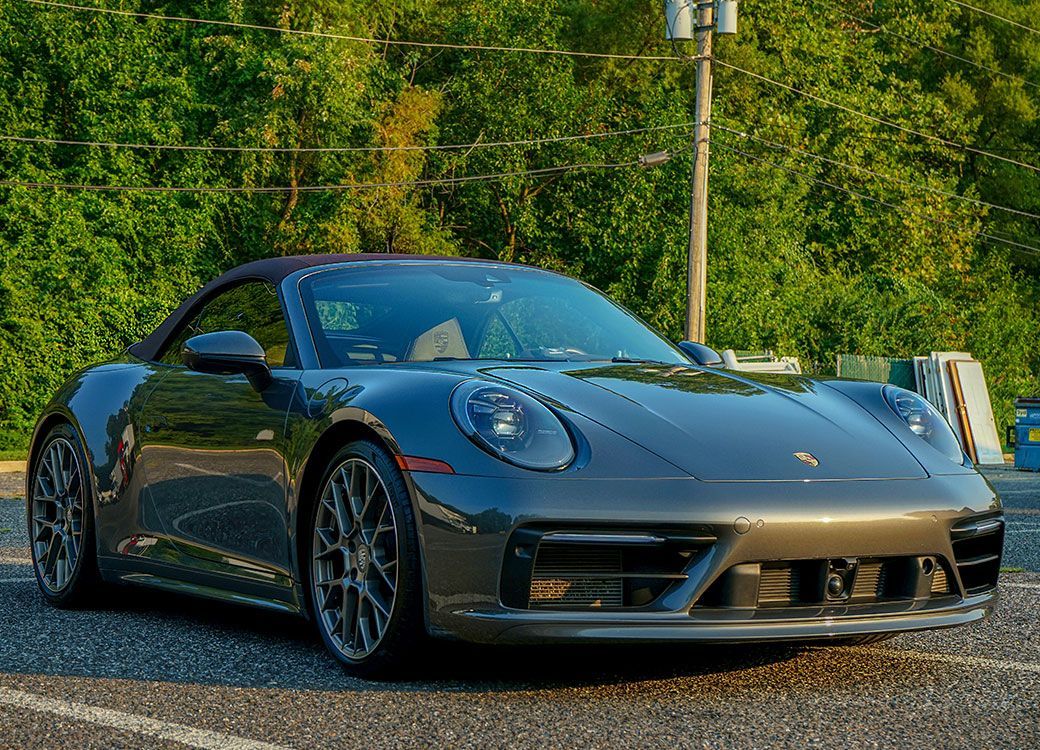
AVOIDANCE OF SCRATCHING AND FADING DAMAGES
One of the most common problems that car owners face is paint damage. Without proper protection, scratches, swirls, and chips can noticeably mar a vehicle’s appearance, causing unsightly blemishes that can be expensive to repair. However, with paint protection film (PPF), you can keep your car's paint looking like new for longer.
Imagine driving down a gravel road and hearing small rocks pinging against your hood. Without PPF, these small impacts could leave multiple dents and scratches all over the surface. The resulting imperfections could significantly decrease the value and visual appearance of the car. With PPF, however, these impacts are absorbed and dispersed across the film's surface without affecting the paint underneath.
PPF is engineered to resist impacts from rocks, debris, and chemicals that can chip or scratch a car's paint. The film's ability to absorb and disperse energy prevents it from reaching the paint surface, leaving no physical marks or scratches on your vehicle.
While some car owners may believe that parkway incidents only happen infrequently, it’s important to remember how easy it is for any driver to accidentally nick someone else's parked vehicle while backing up or turning around in tight spaces. Paint protection film provides excellent protection against these types of incidents, which will undoubtedly save money on repairs.
Think of PPF as a shield protecting your car from everyday life's potential harm. It acts as an invisible barrier against anything that could damage your vehicle's exterior. Now that we have established how critical PPF is for avoiding scratches and fading damages, let's dive into the next major benefit: enhancing a car’s visual appeal.
ENHANCEMENT OF CAR VISUAL APPEAL
PPF not only offers physical benefits to your car, but it also enhances its visual appeal. A sleek and well-maintained exterior can give off an intimate sense of pride in car ownership.
One example of this is the ability of high-performing PPF to self-heal minor scratches and swirls. PPF’s self-healing properties allow it to return to its original state after minor scratches and blemishes caused by normal wear and tear. This feature gives the vehicle a "like-new" finish, making it look shiny and visually appealing even after a few years.
PPF is resistant to UV radiation and chemicals, which means that high-quality PPF should not yellow or degrade over time. The film will remain transparent and maintain the shine of the vehicle's paint color while minimizing visible flaws.
Despite traditional waxing or polishing solutions effectively working to enhance a car's visual appeal, PPF offers much more protection than these traditional methods. Uncovered paintwork is susceptible to premature aging, corroding, and fading due to exposure to various elements, such as rain, sunshine, or bird droppings, that can damage the paintwork. In contrast, PPF provides a longer-lasting layer of protection beyond what typical waxing offers.
So far, we have discussed how PPF’s avoidance of scratches and fading damages can save money on repairs and enhance the car's visual appeal. The next section will focus on important factors to consider when installing this essential product, whether you do it yourself or choose a professional installer with expertise in this area.
INSTALLATION PROCESS FOR PAINT PROTECTION FILM
Paint protection film is a great investment for anyone who wants to maintain the shine and protection of their car's paint. However, installing PPF on your car can be a daunting task since it requires precision and can take hours to complete. In this section, we'll break down the installation process of paint protection film so you can understand what it entails.
To begin with, the installation process of PPF involves cleaning your car thoroughly to get rid of any dirt, dust, or debris present on its surface. A dirty car will not only hinder the adhesion of the film but also cause an unprofessional finish that leaves too much space between the car's body and the film. For this reason, it's essential to look for an area with low humidity levels to prevent moisture buildup that may interfere with adhesiveness.
Next up, after cleaning the car, measure and pre-cut sections of the film to fit into specific areas without leaving any gaps or bubbles. It is crucial to be accurate during cutting, as poorly cut sections might leave gaps or overhangs that could attract debris or air bubbles later. Automated computer patterns are usually used as a template for pre-cutting paint protection films on modern vehicles since they permit optimized fitment for every part.
While PPF installation might seem like a DIY job, calling in professionals offers many advantages worth considering. Firstly, professional installers have years of experience working with different models and makes, so they already have a plan laid out for every type of vehicle. Secondly, they have better access to high-quality paint protection films that are thicker and more resistant than those sold in stores. Furthermore, they offer specialized services such as custom templates, laser reconnaissance applications, and, at times, warranties that focus largely on their workmanship.
Think about a dental store. You might be able to buy all the equipment and supplies required to fix a cavity on your own, but it's often best left to an experienced professional since they know what needs to be done. The process of installing paint protection film is similar in the sense that specialized equipment, knowledge, and experience are essential components for great results. With that being said, let's move onto the next section, where we discuss whether you should do it yourself or hire a professional installer.
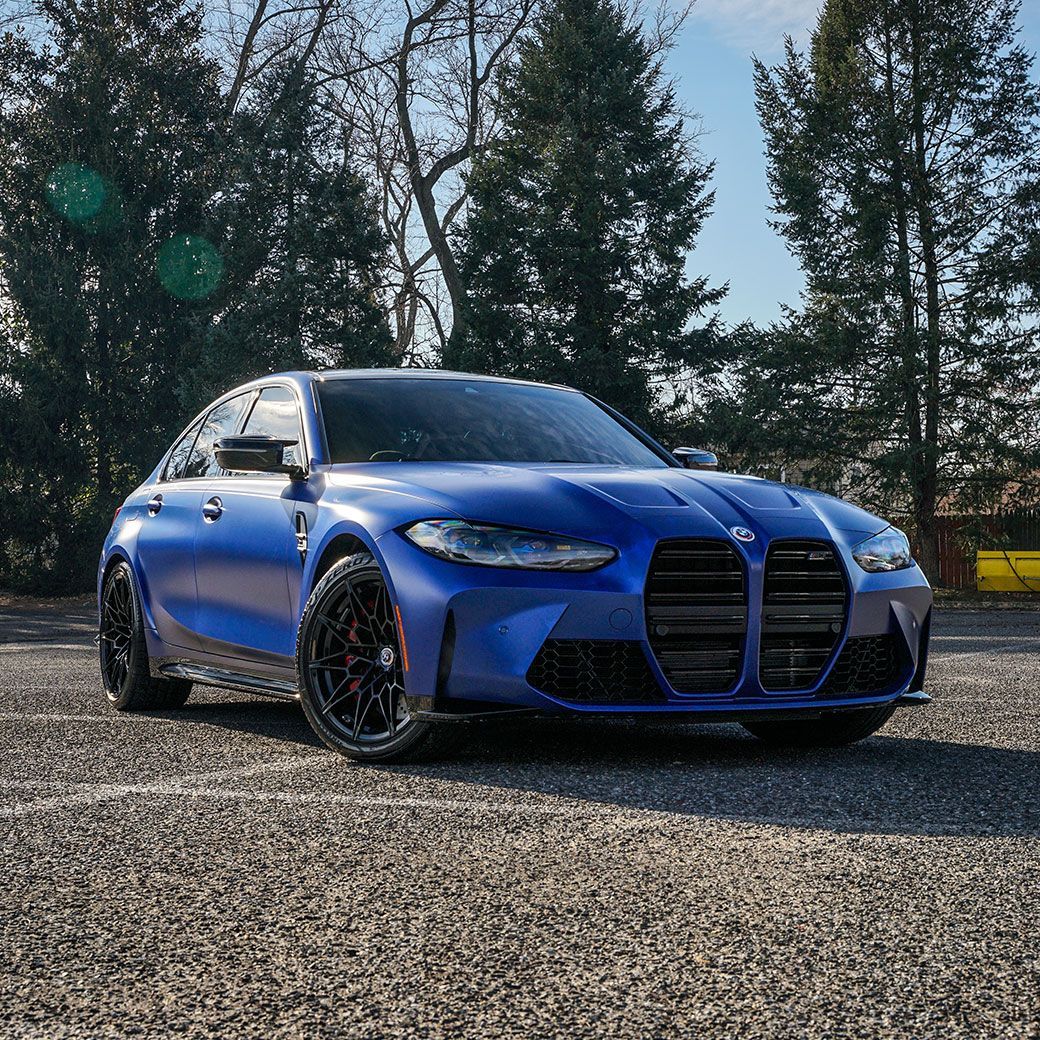
DIY VS. PROFESSIONAL INSTALLATION
Now that you understand what it takes to install PPF, let's determine whether you should install it yourself or have a professional take care of it. DIY installation can help save money since all you'll need to incur is the cost of purchasing the film; however, if not meticulously executed, several problems might surface. For instance, incorrectly cutting or installing the film could lead to bubbles or leave gaps, thus defeating the purpose of putting it on your car.
On the other hand, professionals usually warrant their workmanship and offer specialized tools such as laser reconnaissance software, which can deliver an exact fitment for your vehicle. Additionally, expert installers provide a comprehensive cleaning service before the application process begins, which allows a visual inspection to detect any scratches or chips under the dirt that would otherwise affect adhesion quality.
The decision on whether to go DIY or professional is mostly determined by personal preference and cost factors. Here's a quick look at some points to consider when deciding:
Budget: If the budget is tight, then do-it-yourself installation may be more attractive.
Complexity: If your car has many curves and intricate designs, professional installation is an excellent option.
Time: If you're short on time or require quick delivery, hiring professionals can save you hours of work.
Warranties: Look for companies that offer warranties or guarantees when considering professional installation.
Having said all that, both DIY and Professional installation have their fair share of benefits and disadvantages. When deciding how to proceed, remember that the quality of your PPF's installation ultimately determines its effectiveness.
LONG-TERM MAINTENANCE AND ITS IMPACT
After installing paint protection film (PPF), it is essential to maintain it for long-term use. PPF is designed to last for several years, but proper cleaning techniques and maintenance routines will affect its durability. Neglecting regular care can result in a shorter lifespan for the PPF, costing more money in repairs and replacements.
To keep PPF in optimum condition, car owners should routinely clean it with mild soap and water. This method allows for gentle yet thorough cleaning of the protected surfaces without any risk of damage or product buildup. Using specialized cleaners solely meant for cleaning PPF instead of dish soap or car shampoo is also an option to consider.
Failure to clean the PPF on a regular basis can lead to dirt accumulation and cause the film to wear out faster than expected. Over time, grime may become embedded within the surface of PPF, opaquing the clarity of the film and reducing its ability to heal minor scratches and swirls. To avoid such problems, it's paramount to incorporate a regular maintenance schedule that fits your lifestyle and your driving habits. For example, people who live close to industrial areas with high pollution rates might need to wash their cars more often than someone living in rural areas or suburbs.
While some arguments suggest that ceramic coatings are an alternative choice for long-term maintenance that replaces traditional waxing with added protection benefits like UV fading and better hydrophobic capabilities, It's important to note that ceramic coatings work alongside PPF and should only be implemented once PPF has been installed correctly.
To ensure that your PPF lasts for years and provides optimum protection for your vehicle, proper maintenance is required. Incorporating a cleaning routine and following the manufacturer's guidelines can prevent costly mistakes with long-term consequences. By taking care of your car's paint protection film, you're investing in your vehicle's longevity and ensuring that it looks pristine now and down the road.
TRUSTED PAINT PROTECTION FILM SERVICE IN CHERRY HILL, NEW JERSEY
Don't let the wear and tear of daily driving compromise your vehicle's flawless finish. Choose M&G Automotive Detailing, the unrivaled experts in paint protection film services in Cherry Hill, New Jersey. Our dedicated team of professionals is committed to preserving your vehicle's pristine appearance and ensuring its longevity on the road. Trust us to shield your investment from scratches, chips, and other unsightly damages. Take the proactive step to protect your car's beauty and value today. Schedule an appointment with M&G Automotive Detailing and experience the peace of mind that comes with our trusted services. Your vehicle deserves the best, and we deliver nothing less!

